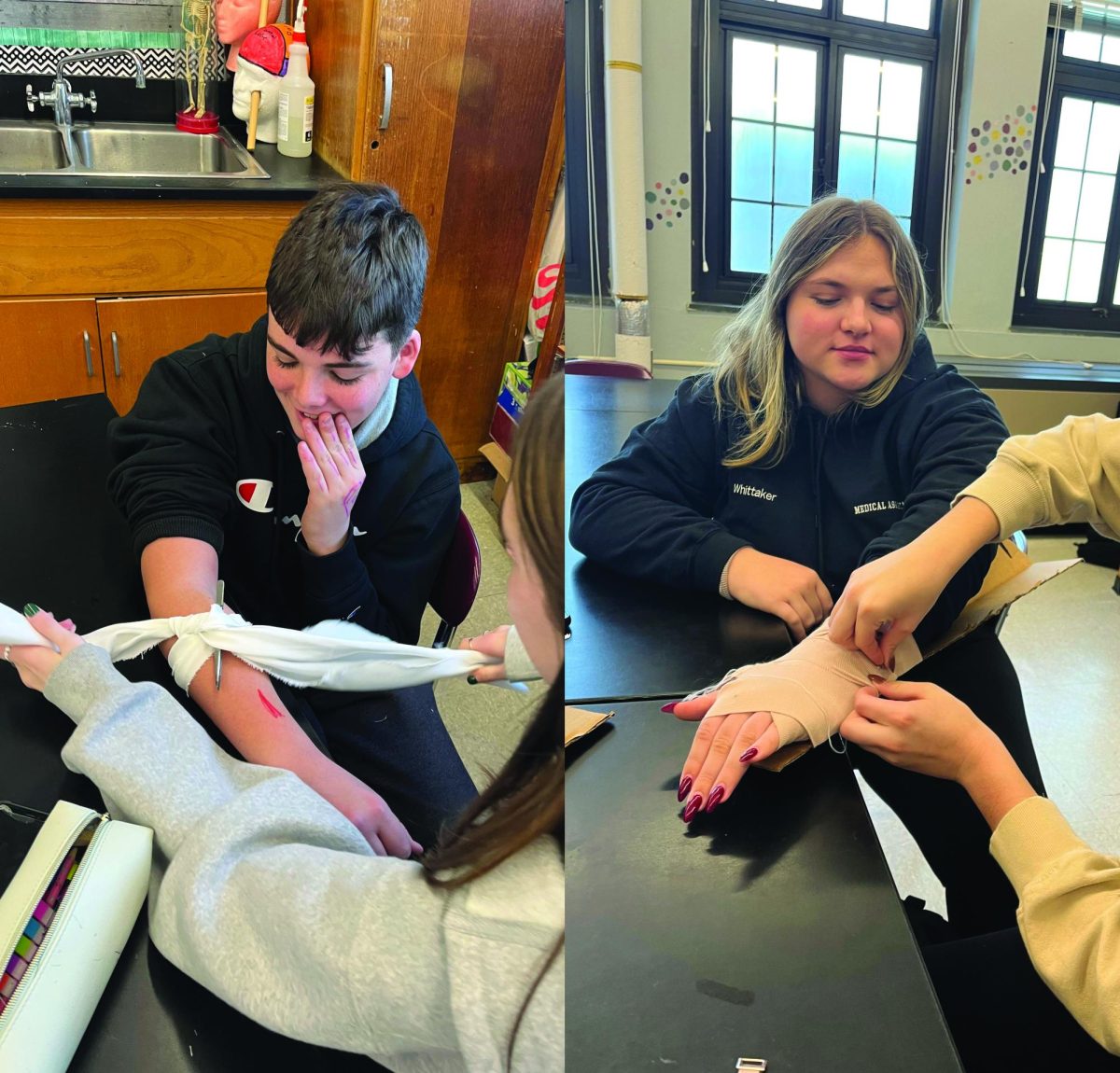Splints and tourniquets have been used for medical emergencies for over hundreds of years. A tourniquet’s main purpose is to stop external bleeding whereas splints are used to hold bones and joints in place to prevent fracturing. Science teacher and Future Medical Leaders (FML) club advisor, Ms. Stehl, thought it would be a great skill for students to know how to react in case of an emergency situation. On November 20th, 2023 the FML club held a DIY “Learn How to Make Splints and Tornequits” event. Materials consisted of old bed sheets and sheets of cardboard, given a real emergency situation, these would be the materials people would have at their disposal.
First, to make the tourniquets, each pairing received a long strip cut out from an old bed sheet and metal forceps found in the science classroom. Ms. Stehl and the club founders went around showing everyone how to correctly use the forceps to twist the cloth sheets around the arm. Next, the students had a competition where they had to find random objects on themselves or in their bags to use. Students creatively used items from the sleeves of their jackets, to keychains, bandanas and necklaces. The competition was a great way to view how the students could think on their feet and be creative with the materials they utilized. For the DIY splints, pieces of cardboard and cloth were used. Students learned how to wrap the cloth around the cardboard securely to ensure that in an emergency, the bones and joints would not move.
Junior Emma Pilato comments, “I think it was really great that we learned how to do this life skill because you never know when you might need to do a tourniquet on someone. I also believe that more people should learn how to do this skill so they can save a life in any type of traumatic accident.”
Overall, the event was a huge success and was informative for many students. Even for those who are not interested in the medical field, it is good to have a basic understanding of how to make the splints and tourniquets in case of a real emergency one day.


